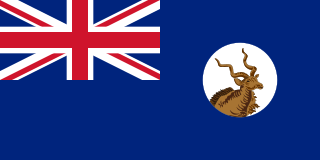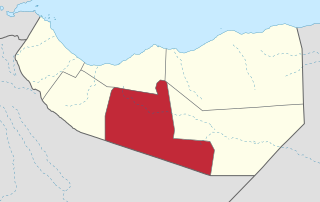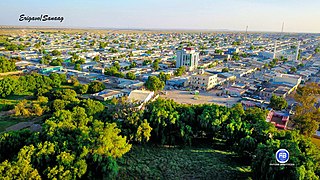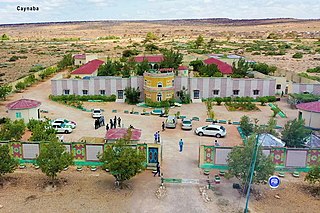
British Somaliland, officially the Somaliland Protectorate, was a protectorate of the United Kingdom in modern Somaliland. During its existence, the territory was bordered by Italian Somalia, French Somali Coast and Abyssinia. From 1940 to 1941, it was occupied by the Italians and was part of Italian East Africa.

Togdheer is an administrative region (gobol) in central Somaliland. Togdheer is bordered by Maroodi Jeex to the west, Saaxil to the north, Sanaag to the northeast, Sool to the east and Ethiopia to the south. Its capital is Burao.

Erigavo, also spelled as Erigabo, is the capital and largest city of the Sanaag region of Somaliland.

Burao, also spelt Bur'o or Bur'ao, is the capital of the Togdheer region and the second largest city in Somaliland. Burao was the site of the declaration of an independent Somaliland on 18 May 1991.

The Dhulbahante, are a Somali sub-clan, part of the Harti branch of the larger Darod clan. They primary reside in and around their traditional territories of Nugaal, as well as Doollo. The clan's progenitor is buried at Badweyn.
Sheikh Bashir Sheikh Yusuf Sheikh Hassan was a Somali religious leader famed for leading the 1945 Sheikh Bashir Rebellion against the British colonial authority in Somaliland.

Aynaba, also spelt Ainabo, Ainaba or Aynabo is a major town in western Sool region of Somaliland as well as the administrative seat of the Aynaba District.
Gowsaweyne, also spelt Gawsa Weyne and Gosawein is a village in the Sool region of Somaliland. It is located in the Aynabo District.

The Habr Je'lo, Arabic: هبر جعلو, Full Name: Mūsa ibn ash-Shaykh Isḥāq ibn Aḥmad, historically known as the Habr Toljaala is a major Northern Somali clan of the wider Isaaq family. Its members form the confederation along with the Ibran, Sanbuur and Tolje’lo.

The Mohamed Abokor is a Somali clan, and a major sub-division of the Habr Je'lo of the Isaaq.
The Musa Abokor is a Somali clan, and a 2 major sub-division of the muuse sh isxaaq clan of the Isaaq clan-family.
Beeyo Macaan is a town in Sheikh District, in the Sahil region of Somaliland.
Ceel Dhaab, also spelt Ceeldhaab or El Dab is a town in the Aynabo District, in the Sool region of Somaliland.
Badweyn also spelt Badwein is a town in the Aynabo District, in the Sool region of Somaliland.

The Mohamoud Garad is a Somali clan. Its members form a part of the Dhulbahante, a sub-division of the Harti/Darod clan-family. The clan is divided into three main sub-clans ― namely the Ahmed garad, the Ugaadhyahan and abdi garad.

The 1945 Sheikh Bashir Rebellion was a rebellion waged by tribesmen of the Habr Je'lo clan in the cities of Burao and Erigavo in the former British Somaliland colony and protectorate against British authorities in July 1945 led by Sheikh Bashir, a Somali religious leader. This rebellion occurred two months after the end of the Second World War in Europe, and post-war conditions, and the impending collapse of the British Empire, may have been the reasons for the rebellion in the first place.
Kirit is a town in the Burao District, in the Togdheer region of Somaliland. The town is 92 km southeast of Burao, the regional capital. It located on the road connecting Burao and Las Anod. It belonged to the Saraar region, which was temporarily established in Somaliland.
Cayn or Ayn is an administrative region that Puntland unilaterally declared to be established in the 2000s. However, there is Somaliland between Cayn and Puntland, and they do not directly border each other. Somaliland has legally designated this area as its territory as Buhoodle District. SSC-Khatumo, which declared its secession from Somaliland in 2023, claims the territories of Sanaag, Sool, and Cayn, as its name implies, and effectively controls Buuhoodle.
Buur Dhaab, also known as Buurdhaab or Bur Dab, is a mountain range situated in the Togdheer and Sool regions of Somaliland. The mountain range stands at an elevation of 973 m, or 3,193 ft.

The Isaaq clans began migrating from their ancestral homeland in the city of Maydh, eventually settling and dispersing across various regions of the Horn of Africa. These migrations were part of the broader movements of the Somali people around the Horn, which contributed to the establishment of Somali settlements in their present-day territories.














